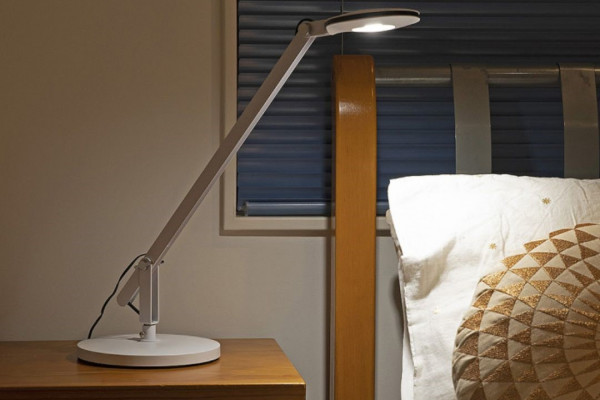How To Choose The Right Downlight?

Not all downlights are equal. But there is a reason why people are choosing to have the humble downlight as a main source of light throughout their homes...
Their discreet aesthetic, everyday functionality and ability to brighten a room while also blending with more decorative lights such as hanging lights and wall lights - is exactly why they have become a staple in many homes lighting choices.
Downlights are mostly used to provide general room lighting. But you can find downlighting solutions for more niche uses - such as tilted or skillion ceilings - or those that provide low glare lighting. So selecting the right downlight is crucial to creating a well lit, welcoming environment and functional space for you to enjoy.
With that in mind, let's take a look at some of the Key Factors to consider when deciding what downlight to select for your space...
Choosing LED Downlights |
||
| KEY FACTOR | WHAT TO CONSIDER | |
Lux / Lumens |
Essentially Lux and Lumens refer to the downlights brightness and density in a space. How bright or intense your light needs to be is dependent on the room - and your use of the space. For example, kitchens and bathrooms (where finer tasks take place) will need more light than say a dining room or hallway. You can find out more about Lumens here. |
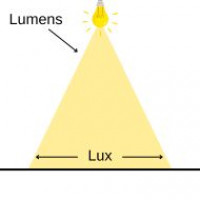 |
ColourTemperature |
Colour temperature has a big impact on the ambiance and atmosphere created in a space. It is measured in Kelvins. The higher the number on the Kelvin scale, the cooler the light is. The lower the number, the warmer the light appears. Warmer Whites are great for creating relaxing and cosy atmospheres. Cooler whites are great for practical tasks. We have more information on Colour Temperature in our Info Centre article here. |
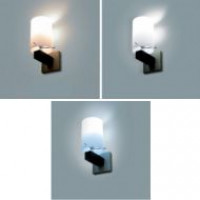 |
IP Rating |
The IP rating becomes very important when looking to place downlights in bathrooms or wet areas. Spaces that are out of the 'splash zone' from sinks, baths, showers etc most IP ratings will suffice. Where higher ratings of IP55 or IP65 may be required where water will be sprayed directly over the fitting. You Electrician can guide you as to what level of IP rated fitting is required based on it's location. |
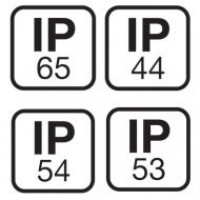 |
PlacementMatters |
Installing downlights towards the centre of a room tends to leave darker walls and corners. To get the best out of downlights for general room lighting, place them closer to the walls. The light is then reflected and diffused off the wall, removing the 'gloomy' effect centralising downlights can often have. Downlights placed close to walls can also create attractive patterns of light, known as scallops. Installing over artworks can also make great accent or display lighting. |
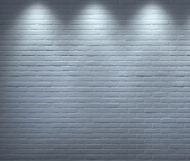 |
FixedDownlights |
Fixed downlights are the most common form of downlights found in homes and offices. If you are looking for simple all purpose lighting, |
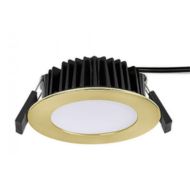 |
Tilt or GimbleFrame |
Tilt or Gimble framed downlights allow you to adjust the direction of light. This can be useful in places such as kitchens, bathrooms or home offices where task lighting may be required. Tilt and Gimble downlights aren't essential. We recommend using these type of downlights when more control over light direction will make your space more functional. |
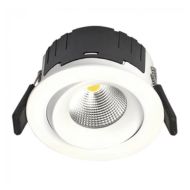 |
Surface MountDownlights |
Surface mount downlights provide great general room lighting and are often easier to install than recessed lights (no need for large hole cuts into the plaster board above). Ideal for where there is no void above the ceiling to install a recessed fitting. And are a great alternative for Fire Rated Buildings. Check out our Mahina Surface Mount Downlight shown here. |
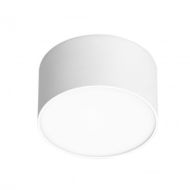 |
Dimmable |
Dimmable options are a great solution for spaces such as living rooms and bedrooms. It allows you to adjust the light intensity, helping to create a relaxing and cosy ambiance in the evenings, while maintaining a well lit and functional space in the day time. |
|
Low Glare UGR19Downlights |
UGR stands for Unified Glare Rating and is a way of measuring the level of glare from a light fitting. UGR19 means a Unified Glare Rating of 19 or less. The lower the UGR number, the less glare. Low glare lighting helps to minimise harsh light and can help to reduce discomfort and eye strain. Take a look at one of our UGR19 downlights here. |
 |
Beam Angle |
The smaller the beam angle, the narrower the spread of light will be - creating more of a spotlighting effect. Beam angles of 90° or higher create a more even spread of light and a great option for living rooms, media rooms, office etc. It's also good to be aware of the wording used when comparing beam angles between manufactures. As some state full beam angle, while others use half beam. Here at Superlux we state the 'half light' beam angle. We take the cut off at where Lux has reduced to 50%. |
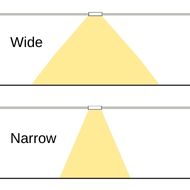 |
Cut Out |
If you're looking to update and replace current downlights, remember to check the hole cut dimensions before you purchase your replacement. You can check out the dimensions column on our website for 'Hole Cut' sizing for our products. Go to our Advanced Search page, and use the 'Hole Cut mm' filter to find available fittings in your 'hole cut' size. |
|
Meets AS/NZSStandards - SDoc |
You should only ever use light fittings that meet the AS/NZS standards. Trying to save money buying lost cost models from overseas could cost you more in the long run if downlights don't meet the local quality and safety standards. SDOC's (Supplier Declaration of Conformity) are available to download on each product page on our website. |
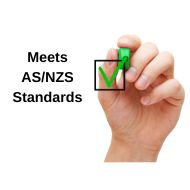 |
Insulation ContactRating NZ /AUS |
Not all downlights are safe to be covered by insulation. While LED downlights don't become as hot as other more traditional light sources, it's still important to be safe. Look out for the IC and IC-F rated symbols, this means they are safe to be covered by insulation that can be exposed to temperatures up to 90°C. Find out more about downlight classifications in our info centre here. |
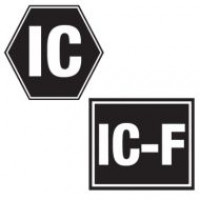 |
Fire RatedDownlights |
Often terrace style or multi level apartments require downlights which are fire rated. They are designed, along with the rest of the building to stop a fire from spreading for 30 or 60 minutes depending on the requirements. Check out our Fire Rated Downlights here: LDLB90-FIRE, SD125-FIRE60 or SD12L-FIRE60. |
 |
LED Integral orBulb Replaceable |
LED downlights are a popular choice these days, but LED bulb replaceable options are also available. While each technology has their own benefits, see our article here on the pro's and con's. |
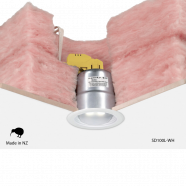 |
